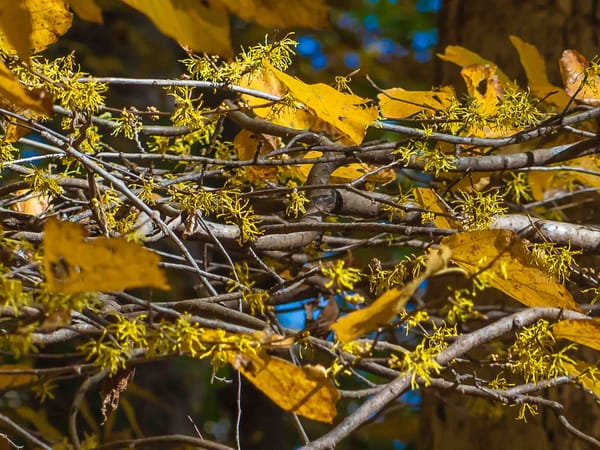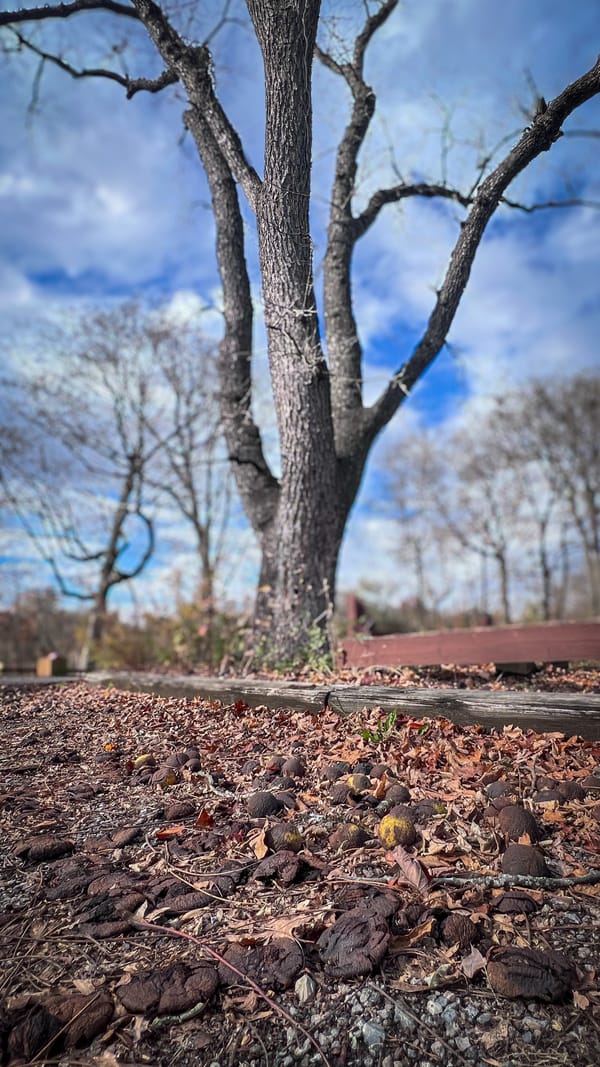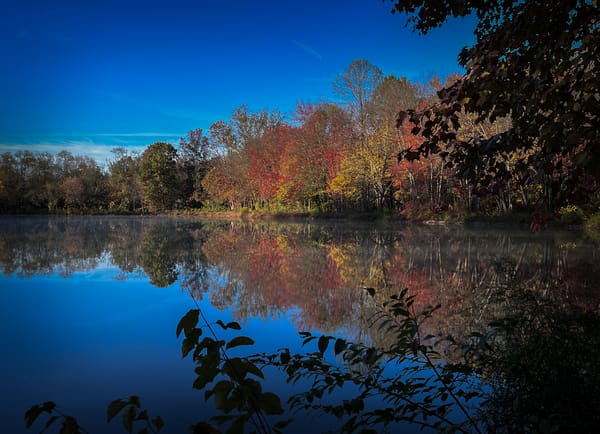Eastern Painted Turtle
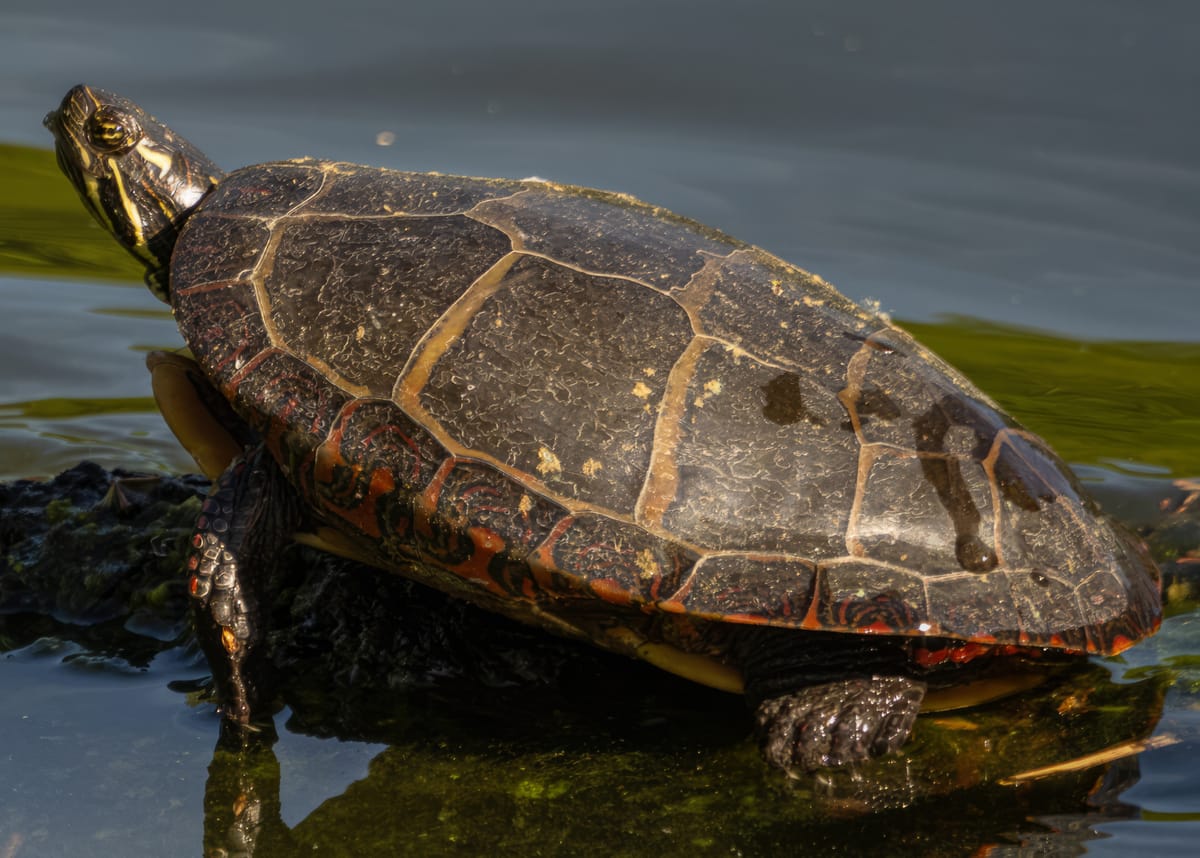
This is the third species profile in the turtle series, here's the first entry that discusses things common to all the turtles at the park with links to the other profiles.
Eastern Painted turtles (Chrysemys picta, picta), and Pond sliders and Red-eared sliders (both of the genus Trachemys), share some general appearances and habits as freshwater turtles, but there are distinct differences in appearance and genetics.
Red-eared sliders have a single red stripe behind each eye. The rear edge of Red-eared and pond sliders upper shell (carapace) are serrated, or saw-toothed. Most visible in younger turtles the serrations may become less distinct with age. Their lower shell (plastron) is usually yellow.
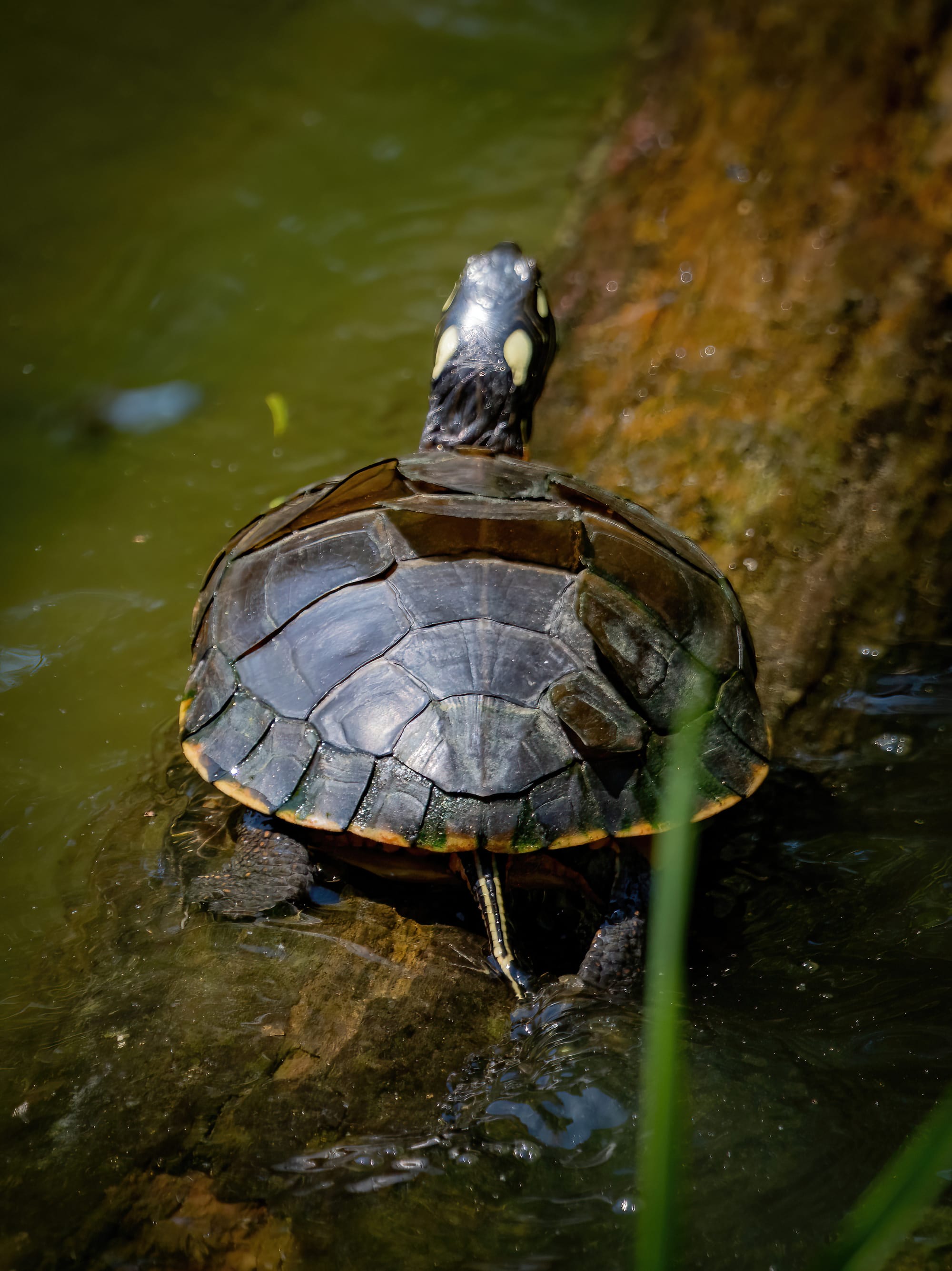
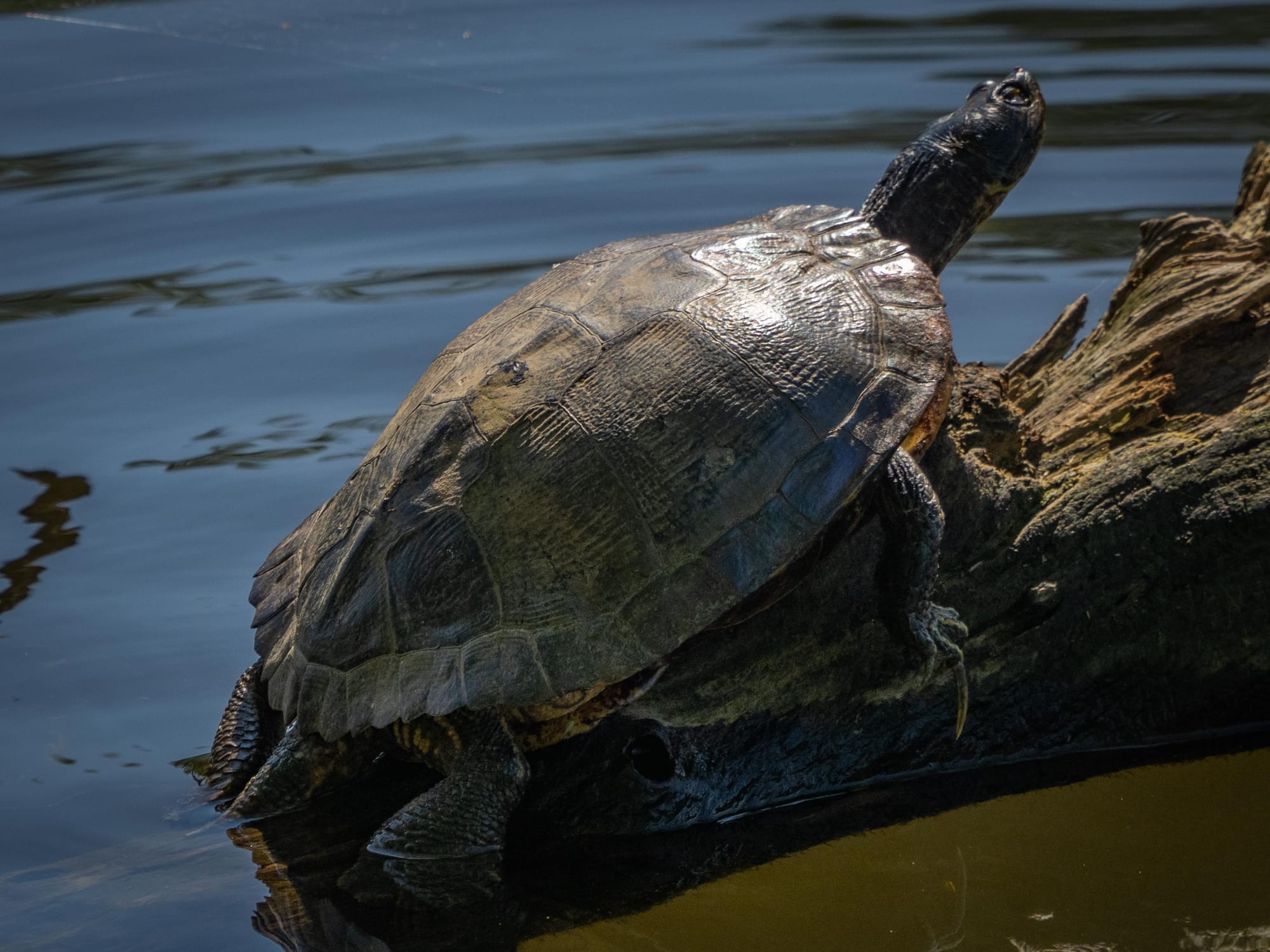
The rear edge of the painted turtle shell (left) is smooth as compared to the serrated rear edge of the pond slider shell (right). Also note the yellow spots on either side of the painted turtle's head.
Painted turtles have a smoother and flatter black or olive-green carapace with a smooth rear edge. Scutes (the plates that form the shell) may be bordered with yellow, olive, or red lines. The marginal (edge) scutes have prominent red or orange markings that are responsible for the name "painted". The plastron is plain yellow and unmarked.
Head, neck, and legs are dark with distinct yellow and/or red stripes, with yellow spots on each side of the head behind the eye. Upper jaw has a distinct notch.
Chrysemys picta are found across the U.S. and into Canada. Sliders overlap the southern part of this range and extend into Mexico, Central, and even South America.
The Eastern painted turtle is the sole surviving species on its particular branch of the turtle family tree, the Chrysemys branch. Other types of Chrysemys turtles did indeed exist but have been extinct of millions of years. There are four distinct regional subspecies of Chrysemys picta likely due to populations being separated by ancient ice ages.
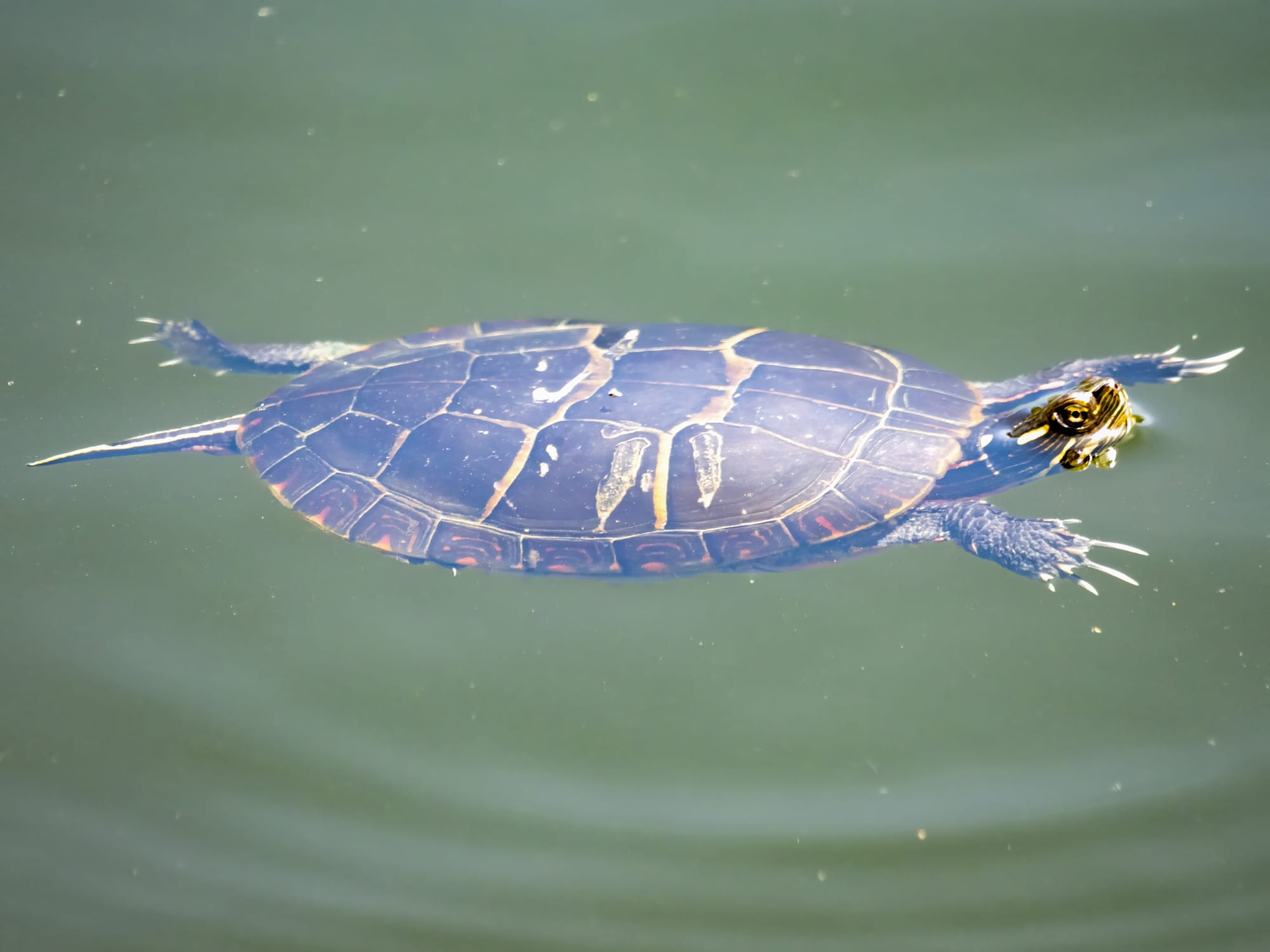
Eastern Painted turtle males are around 4-6 inches in length, and females 5-7 inches. Mature males have long forefeet claws, while the claws on the forefeet of females are relatively short. They have a lifespan of 30 to 50 (or more) years.
In southeastern Pennsylvania mating begins as early as March and continues to mid-June, with a peak often observed in April and May. Mating is polygynous system (one male, multiple females).
The male begins the courtship ritual by approaching a female in the water and gently stroke her head and neck with his long foreclaws, often with a trembling or vibrating motion. If the female is receptive she may respond by stroking his outstretched limbs with her own foreclaws. Then the male swims a short distance away. If the female follows they will sink to the bottom of the pond and copulate.
From May to mid-July females may travel several hundred yards to find a sunny spot with loose soil to dig their flask-shaped nest, laying 2 to 11 eggs, with an average often between 4 and 8 eggs. Incubation takes 72-80 days.
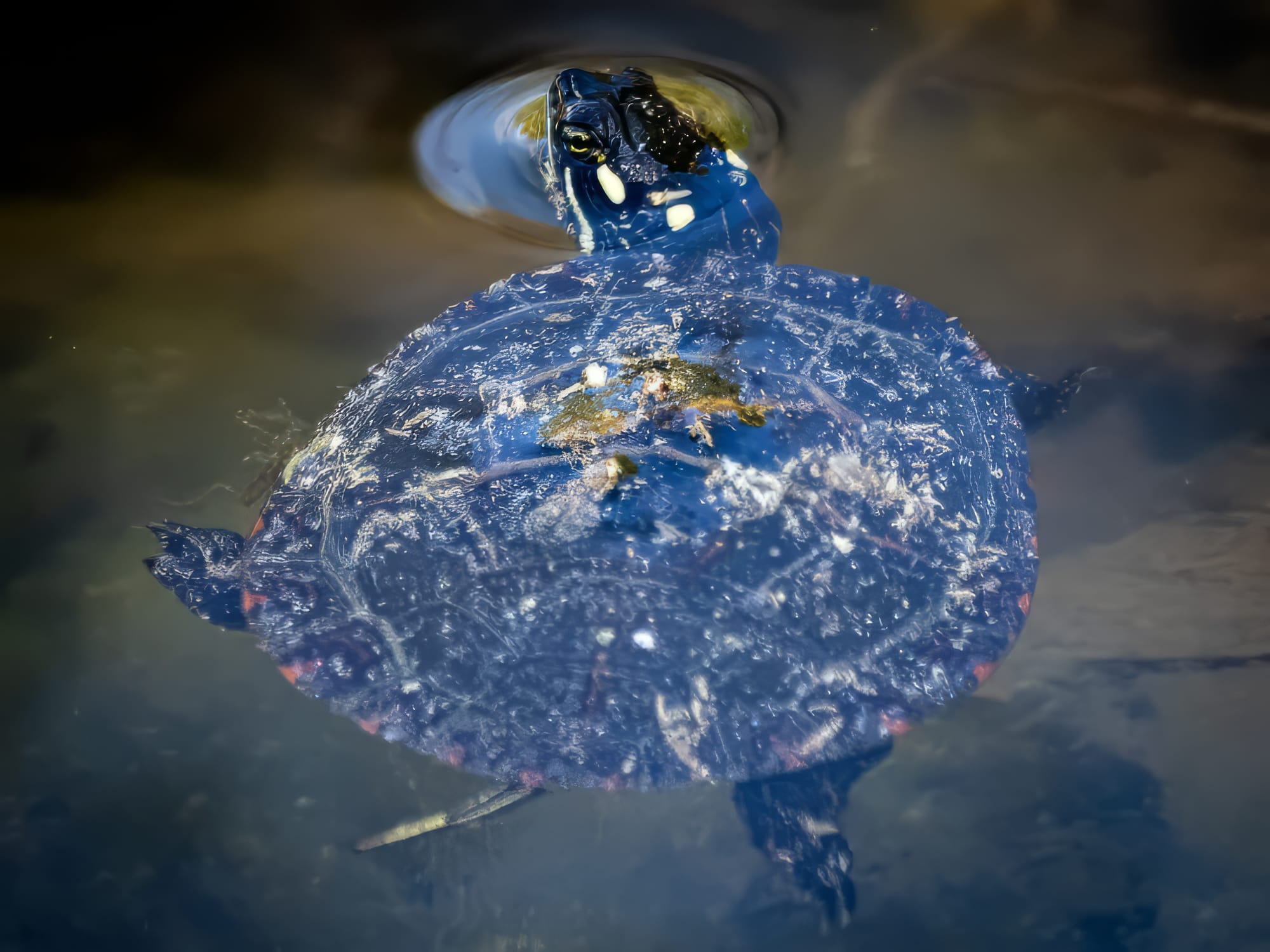
Hatchlings either emerge in late summer or early fall (August-September) or overwinter in the nest to emerge the following March-April. Hatchlings are able to survive freezing temperatures by preventing their body fluids from freezing or by tolerating ice formation in their tissues.
Newly emerged painted turtles are only 1 to 1.3 inches long and often brightly colored. As is true of most turtle species a small percentage of eggs produce turtles that survive predators and become adults.


